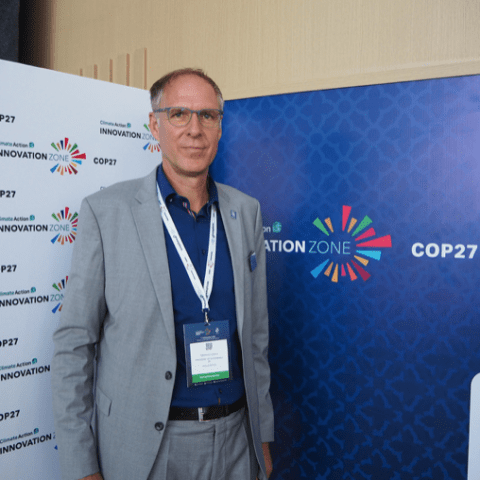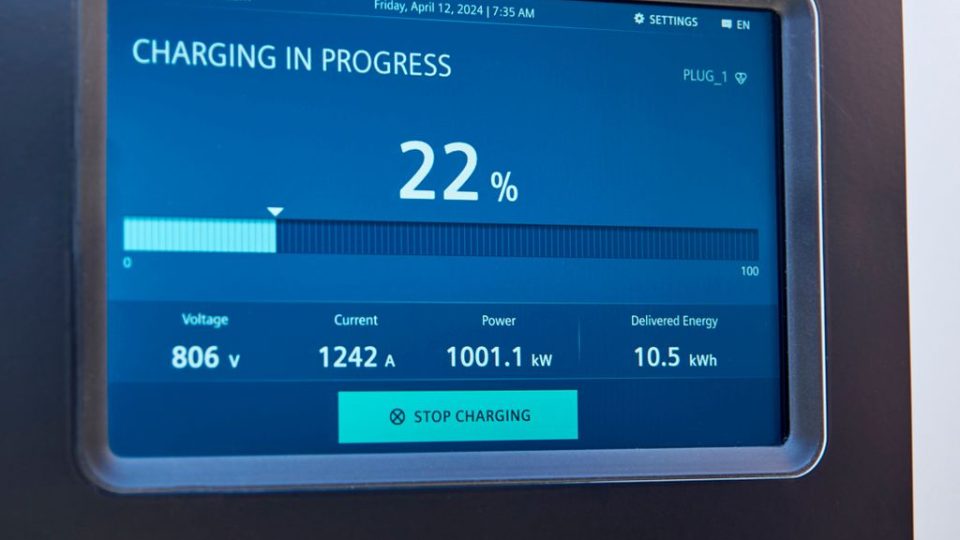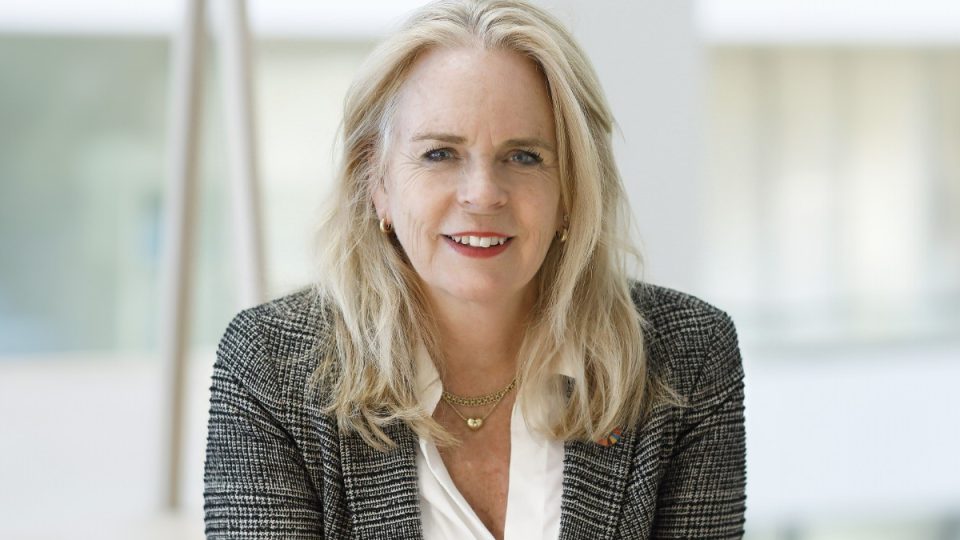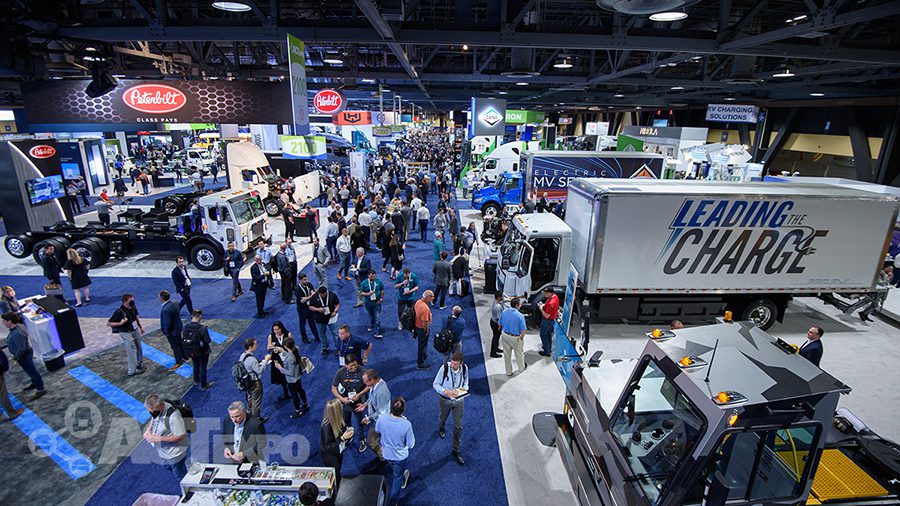Rolls-Royce at COP27: “What we need is security of investment”
An interview with Andreas Görtz, head of Rolls-Royce’s Sustainable Power Solutions business unit, about mtu technologies that can make the world greener if the framework conditions are right.

An interview with Andreas Görtz, head of Rolls-Royce ’s Sustainable Power Solutions business unit, about COP27 and mtu technologies that can make the world greener if the framework conditions are right.
“There are many crises in this world – but this one is the biggest,” said UN Secretary-General Antonio Guterres, referring to the climate crisis. “If we don’t solve it, we’re going down.” This sentence shows just how high the stakes are at the COP27 world climate summit in the Egyptian seaside resort of Sharm el-Sheikh. The 1.5 degrees are at the forefront of everyone’s mind, and the 40,000-or-so delegates from almost 200 countries are scrambling to find ways to stay within the terms of the Paris Climate Accord. Andreas Görtz, head of the Sustainable Power Solutions business unit at Rolls-Royce Power Systems, was also there. Here he explains how mtu products can help solve the climate crisis and what general framework is required to put them to good use.
Andreas Görtz, you’ve now been in charge of the Rolls-Royce Sustainable Power Solutions business unit for seven months, and this year you’re attending the COP27 World Climate Summit for the first time. What expectations did you have on your way to the event?
Firstly, I want to make Rolls-Royce visible. We have, and are developing, a lot of technologies that can be used to generate carbon-neutral drive-power and energy, and I want to draw attention to these and make them known. I also want to find markets and investors to put our products into use. I’m convinced our technologies can help achieve the 1.5 degree target enshrined in the Paris Climate Accord.
What technologies are you talking about?
First-off, we’re working on completely new products such as fuel cell systems and electrolyzers. These aren’t yet ready to go into full production, but we’re getting there. As early as next year, we’ll be supplying three zero-carbon fuel cells to the Duisport inland waterways port in Duisburg where they’ll be used to generate electricity from green hydrogen. We also intend to launch electrolyzers very soon. These can be used to produce hydrogen from green electricity, and this is one way to unlock to green energy transition, especially when it comes to storing renewable power. Demand for these products is already huge, and we’re working hard to get them ready for market.
But we’re also making our existing products fit for a sustainable future. Many of our diesel combustion engines can already run on sustainable fuels such as HVO, drastically reducing their carbon emissions and their pollutant emissions too. Then we’re also working on entirely new combustion engines running on hydrogen or methanol. The world of propulsion and power generation is changing, and I find it fascinating. It’s exciting to see our company transforming and going down the pathway to net zero. I want to spread this euphoria here at the COP as well. I get the feeling that this summit is very solution-oriented and is actually about finding specific ways of dealing with the climate crisis.
At the COP, you’re talking not just to potential customers and business partners, but also to politicians. What general framework does Rolls-Royce need if it is to turn these green technologies into commercial successes?
Security of investment is a very big issue – in general, but also here at the COP. With its “Green Deal”, the EU has adopted a huge package of investments, legislation and strategies in order to be carbon-neutral by 2050 and to cut carbon emissions by 55% as early as 2030. This also includes subsidizing so-called flagship projects that lead the way in climate protection. This sounds good, but specific legislation is lacking. And such legislation is the basic requirement for security of investment.
The US is one step ahead. Joe Biden pushed through the biggest climate package in the US with the passage of the Inflation Reduction Act. While this is less ambitious than the EU’s plan – targeting a mere 40% reduction in carbon emissions by 2030 – the plan is already on the statute books. The US is investing $ 369 billion in clean technologies. And here’s another big difference compared to Europe – all technology options are open. For example, there is a tax credit of up to three dollars per kilogram of sustainably produced hydrogen. This will make the US one of the cheapest places in the world for producing clean hydrogen.
It also doesn’t matter how this hydrogen is produced – the main thing is that it’s green. Keeping technology options open like this is where Europe often falls down. We’re tending to over-regulate the green energy transition, doing more harm than good. If storage of renewable energy is to be advanced, it makes no difference whether this is done using a pumped storage power plant or a power-to-X plant. It’s the end result that matters. That’s something we in Europe could learn from the US.
After all, COP27 is being held in Africa for a reason: it’s the continent most affected by climate change.
And that’s not all: Africa is not just suffering the most from the climate crisis and feeling the effects most directly – the continent is responsible for just a fraction of carbon emissions. We rich industrialized countries have lived for decades at the expense of the climate. This conflict is palpable here. Africans, quite rightly, expect us to help them as they move away from fossil fuels.
At the same time, the climate crisis also offers African countries the opportunity to benefit economically and export green energy, whether in the form of electricity or hydrogen.
Quite right. A lot of this is about exporting sustainable energy from Africa or the Gulf region to Europe or the US. There is talk of laying submarine cables to bring green power directly to Europe. Hydrogen pipelines are also being talked about. And this is not just about electricity and hydrogen: methanol and ammonia are also under discussion – fuels that can be produced from hydrogen and are easier to transport, being liquid and not gaseous like hydrogen.
What impact is the current energy crisis having on efforts to find carbon-neutral ways of generating electricity and drive-power?
This is a complex issue that I’ve just been speaking about in a panel discussion. Unfortunately, in Europe we’re currently being forced to subsidize fossil fuel to keep it affordable for both industry and private households. This is, of course, unsustainable and counterproductive when it comes to green energy production.
But the issue is actually more complex than that. Because Europe is paying these very high energy prices, the world market is completely focused on Europe. Large LNG tankers, for example, sail past poorer countries to Europe because they get more money for their gas here. These poorer countries cannot afford to subsidize fossil energy and introduce price caps. It becomes unaffordable there, and countries are forced to invest in sustainable energy production. In these countries, the crisis is already an accelerator of sustainable energy.
In the medium term, this will also be the case here in Europe. Everyone knows that our future lies in sustainably generated power. We just need a bit more time until we are ready.
Final question: when do you consider the climate conference will have been a success?
I’ll go home with a warm feeling if and when I get the impression we’re going to have security of investment in Europe and we’re going to manage to strike a balance between the poorer and the richer countries. Only by helping the poorer countries move away from fossil fuels do we stand a chance of solving the energy crisis globally. The technologies are there – we just need to put them to work.








